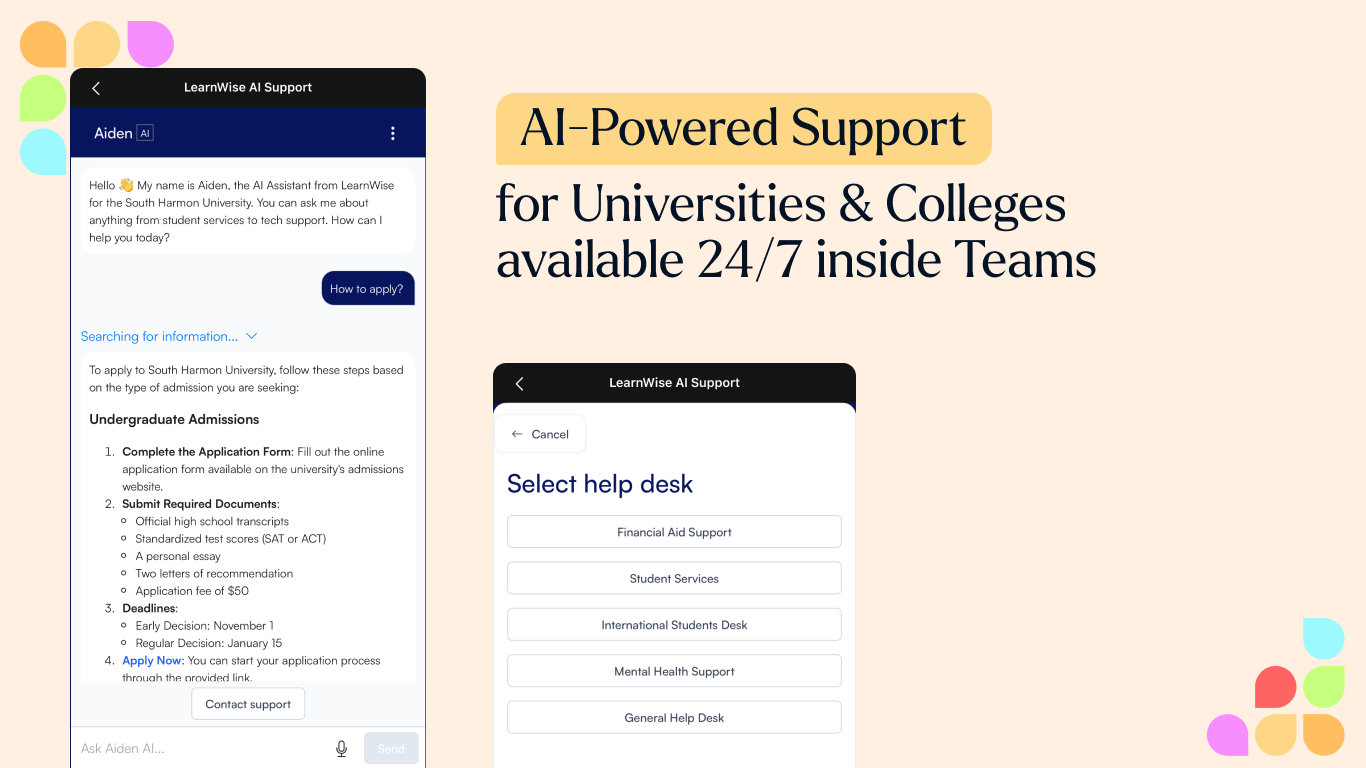Constructing High-Performance Virtual Assistants for Higher Education | Tips and Strategies

Introduction
In today’s rapidly evolving educational landscape, Artificial Intelligence (AI) has proven to be a game-changer. Particularly, AI-driven virtual assistants are pioneering innovative solutions to address the myriad of challenges that higher education institutions face. They help enhance student engagement, streamline administrative processes, and augment the overall learning experience. If you’re part of the IT department of a university and are looking into ways to effectively utilize AI in education, this blog will provide key insights into how to build out virtual assistants most effectively.
Why does this matter?
Before diving into the construction of AI-based virtual assistants, it’s essential to understand how AI is redefining higher education. AI in education goes beyond mere automation—it involves intelligent systems capable of mimicking human intelligence, and even learning and improving over time. Virtual assistants, as a subcategory of AI, are designed to assist with various tasks through natural language processing and machine learning algorithms. In higher education, they can automate routine administrative tasks, provide personalized learning support, offer real-time information to students, and even assist with complex data analysis for research.
Know Your Users: A Student-Centered Approach
The first step in building an effective virtual assistant is understanding your user—students, faculty, and administration. Conducting comprehensive user research helps identify their needs, preferences, and challenges. Your virtual assistant should be designed to address these concerns and augment the user’s experience.
Personalization is Key
One of the significant advantages of AI in education is its ability to personalize learning and support. The virtual assistant should offer personalized recommendations based on each student’s academic history, learning style, and preferences. For faculty and administration, it should be capable of assisting with personalized reminders, scheduling, and task management.
Data Protection and Privacy
Data privacy is a significant concern in higher education. When building your virtual assistant, ensure you have robust data protection measures in place. Be transparent about data usage, respect user consent, and follow all regional and international data protection regulations.
Integration with Existing Systems
Your virtual assistant should be designed to integrate seamlessly with your university’s existing software systems, such as the Learning Management System (LMS), Student Information System (SIS), and other administrative tools. This integration will enable your assistant to draw relevant information and provide more useful, personalized assistance.
Keep it User-friendly
An effective virtual assistant should be user-friendly and intuitive. A complex or counterintuitive system can frustrate users and deter them from using the assistant. Test your assistant with a diverse group of users, gather feedback, and make necessary adjustments for enhanced user experience.
Continuous Learning and Improvement
An effective virtual assistant should be user-friendly and intuitive. A complex or counterintuitive system can frustrate users and deter them from using the assistant. Test your assistant with a diverse group of users, gather feedback, and make necessary adjustments for enhanced user experience.
Gather and Utilize Feedback
Feedback is a critical component for improvement. Regularly solicit feedback from users and use this feedback to improve the virtual assistant’s functionality and user experience. This feedback loop will not only enhance your product but also demonstrate to users that their input is valued and considered.
Collaborate and Iterate
Building an effective virtual assistant is not a one-time task—it’s an iterative process that requires collaboration between different teams, including IT, administration, faculty, and students. Foster a culture of collaboration and continual learning to ensure that your virtual assistant remains relevant and effective.
Conclusion
In conclusion, the transformative power of AI in higher education is undeniable, with virtual assistants leading the charge. They are not only streamlining administrative processes but also significantly enhancing the overall learning experience. We, at LearnWise, have developed Aiden, our proprietary AI-driven virtual assistant, designed with all the aforementioned features and much more. Aiden embodies the essence of a student-centered approach, offering personalized learning support, and ensuring robust data protection. Book a consultation and let us guide you through the seamless integration of Aiden into your edtech workflow, helping you unlock the full potential of AI in education.





.png)
%20(1).png)
%20(1).png)
